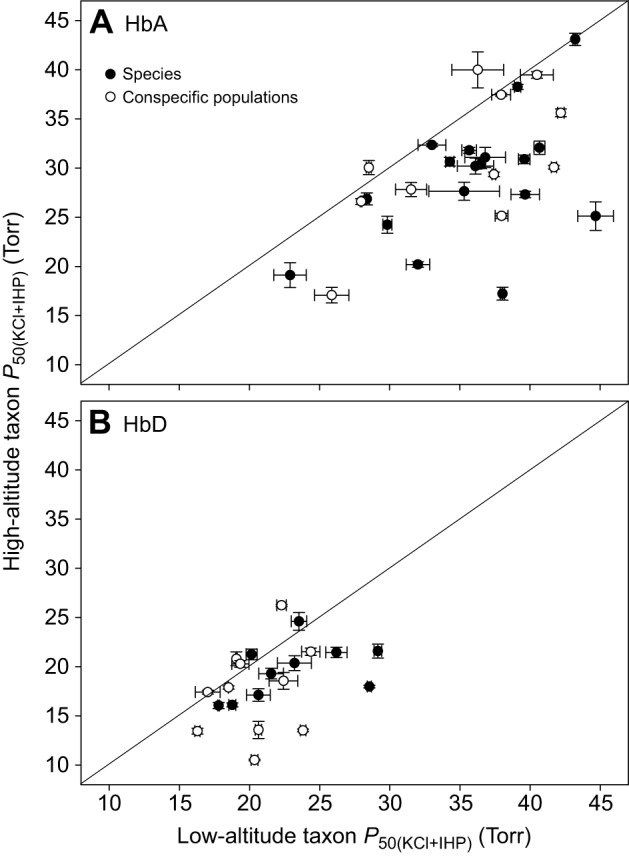Fig. 9.

Convergent increases in Hb–O2 affinity in high-altitude Andean birds. (A) Plot of P50(KCl+IHP) (±s.e.m.) for HbA in 29 matched pairs of high- and low-altitude taxa. Data points that fall below the diagonal (x=y) denote cases in which the high-altitude member of a given taxon pair possesses a higher Hb–O2 affinity (lower P50). Comparisons involve phylogenetically replicated pairs of taxa, so all data points are statistically independent. (B) Plot of P50(KCl+IHP) (±s.e.m.) for the minor HbD isoform in a subset of the same taxon pairs in which both members of the pair express HbD. Sample sizes are larger for HbA than for HbD because the two ground dove species (Metriopelia melanoptera and Columbina cruziana) expressed no trace of HbD, and several hummingbird species expressed HbD at exceedingly low levels (Projecto-Garcia et al., 2013; Natarajan et al., 2016). In such cases, sufficient quantities of HbD could not be purified for measures of O2 equilibria. Filled symbols denote comparisons between species, whereas open symbols denote comparisons between high- versus low-altitude populations of the same species. Data from Natarajan et al. (2015b, 2016).
